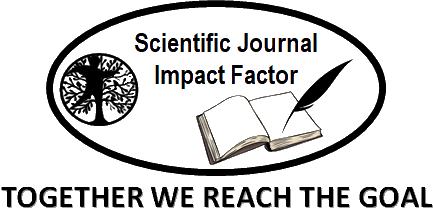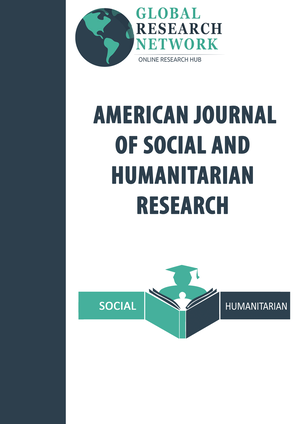Vascular plants utilization in Mahimborondro Protected Area, Northern Highland of Madagascar
Abstract
This study was conducted among local communities bordering the Mahimborondro Protected Area (PA). This ethnobotanical research aimed to document woody forest resources harvested by local populations. The methodology combined semi-structured surveys using a predefined questionnaire with residents of two villages, Bealanana and Beandrarezona, and a floristic inventory to assess resource availability. Respondents were questioned about their livelihoods, particularly their relationships with forest resources. During floristic inventory, four growth parameters were measured: density, basal area, biovolume, and regeneration rate. The surveys identified 39 useful plant species, including three threatened species: Breonia madagascariensis, Cryptocarya vaccinioides, and Prunus africana. The uses identified were as follows: house construction, utensil manufacturing, transportation and agricultural tools, fuelwood, traditional medicine, and fencing. By applying Lance et al. (1994) formula, we identified eight most frequently used species: Erythroxylum nitidilum, Ocotea laevis, Cryptocarya vaccinioides, Erythroxylum sphaeranthum, Brachylaena merana, Eugenia emirnensis, Prunus africana, and Pittosporum verticillatum. Analysis of diameter classes revealed a significantly higher density for trees with a diameter ]0.20 to 0.30 m], which decreased for larger classes. In contrast, basal area and biovolume showed lower values for diameter ]0.10 - 0.40 m], and higher values for trees with a diameter ]0.40 m[. However, the stands of these species mostly exhibited a very good state of natural regeneration, indicating active resource renewal. For sustainable use, any conservation plan for the Mahimborondro Protected Area must integrate the needs and traditional knowledge of local populations regarding these forest resources. Its sustainable management is essential to reconcile biodiversity conservation with community well-being.
Keywords
Full Text:
PDFReferences
Adams, W. C. 2015. Conducting semi-structured interviews. In Handbook of practical program evaluation, eds. Newcomer, K. E., Hatry, H. P. & Wholey, J. S., pp 492-505. Fourth Edition, Jossey-Bass, A Wiley Imprint.
Adekunle, V. A. J. & Olagoke, A. O. 2008. Diversity and biovolume of tree species in natural forest ecosystem in the bitumen-producing area of ondo state, Nigeria: a baseline study. Biodiversity and Conservation, 17: 2735 – 2755.
Albuquerque, U. P., Nascimento, A. L. B., Soldati, G. T., Feitosa, I. S., Campos, J. L. A., Hurrell, J. A., Hanazaki, N., de Medeiros, P. M., da Silva, R. R. V., Ludwinsky, R. H., Júnior, W. S. F. & Reyes-García, V. 2019. Ten important questions/issues for ethnobotanical research. Acta Botanica Brasilica, 33: 376-385.
Avery, T. E. & Harold, B. 2002. Forest Measurements 5th edition. Virginia Polytechnic Institute and State University, Waveland Press, Long Grove Illinois.
Chen, S. ‑L., Yu, H., Luo, H.‑M., Wu, Q., Li, C. ‑F. & Steinmetz, A. 2016. Conservation and sustainable use of medicinal plants: problems, progress, and prospects. Chinese Medicine, 11: 1-10.
Christopher, A., & Chuckran, R. (2017). Standard protocols for forest structure assessment. Journal of Applied Ecology, 54(3), 123-145.
Chokkalingam, U., Smith, J. & de Jong, W. 2001. A conceptual framework for the assessment of tropical secondary forest dynamics and sustainable development potential in Asia. Journal of Tropical Forest Science, 13: 577 – 600.
Cunningham, A., Anoncho, V. F. & Sunderland, T. 2016. Power, policy and the Prunus africana bark trade, 1972–2015. Journal of Ethnopharmacology, 178 :) 323 – 333.
Dawkins A.C. (1959). The management of natural tropical high-forest, with special reference to Uganda. Commonwealth forestry, Institute University of Oxford. England. 155p. FAO, 2001 – State of the world's forests. F A O. Rome.
Dean, T. J., D’Amato, A. W., Palik, B. J., Battaglia, M. A. & Harrington, C. A. 2020. A Direct Measure of stand density based on stand growth. Forest Science, 67: 103 - 115.
Eduard, N., Ramamonjisoa, B., Roger, E., Rabarison, H. & Raharison, R. 2000. Etude sur la politique de conservation des ressources forestières à Madagascar. Conservation International et Direction Générales des Eaux et Forêts de Madagascar. 25p.
Fenning, T. M. & Gershenzon, J. 2002. Where will the wood come from? Plantation forests and the role of biotechnology. Trends in Biotechnology, 20: 291 – 296.
Fredericksen, T. S. & Penã-Claros, M. 2007. Protected reserves within tropical forests managed for timber production: Recommendations using Bolivia as a case study. International Forestry Revew, 9: 835 – 841.
Goodman, S. M. & Wohlhauser, S. 2018. Introduction to Part II. In The terrestrial protected areas of Madagascar: Their history, description, and biota, eds. S. M. Goodman, M. J. Raherilalao & S. Wohlhauser, pp. 676-687. Association Vahatra, Antananarivo.
IUCN, 2022. The IUCN Red list of Threatened Species. . Accessed 05 October 2023.
Lance, A. N., Catling, P. C., & Wann, J. 1994. A review of habitat-related issues affecting the sustainability of forestry in New South Wales. State Forests of New South Wales.
Mallik, A. U. & Rahman, H. 1994. Community forestry in developed and developing countries: A comparative study. The Forestry Chronicle, 70 : 737 – 735.
Neimark, B. 2010. Subverting Regulatory Protection of ‘Natural Commodities’: The Prunus africana in Madagascar. Development and Change, 41: 929 - 954.
Norscia, I. & Borgognini-Tarli, S. M. 2006. Ethnobotanical reputation of plant species from two forests of Madagascar: A preliminary investigation. South African Journal of Botany, 72: 656 – 660.
Onjalalaina, G. E., Sattler, C., Razafindravao, M. B., Wanga, V. O., Mkala, E. M., Mwihaki, J. K., Ramananirina, B. M. R., Jeannoda, V. H. & Hu, G. 2021. Ethnobotanical survey in Tampolo Forest (Fenoarivo Atsinanana, Northeastern Madagascar). Forests, 12: 2 – 24.
Rabearivony, J., Fanameha, E., Mampiandra, J. & Thorstrom, R. 2008. Taboos and social contracts: Tools for ecosystem management – lessons from the Manambolomaty Lakes RAMSAR site, western Madagascar. Madagascar Conservation & Development, 3: 7 – 16.
Raik, D. 2007. Forest management in Madagascar: An historical overview. Madagascar Conservation & Development, 2 : 5 – 10.
Ramage, M. H., Burridge, H., Busse-Wicher, M., Fereday, G., Reynolds, T., Shah, D. U., Wu, G., Yu, L., Fleming, P., Densley-Tingley, D., Allwood, J., Dupree, P., Linden, P. F. & Scherman, O. 2017. The wood from the trees: The use of timber in construction. Renewable and Sustainable Energy Reviews, 68 : 333 – 359.
Ramamonjisoa, B. S., Hemma, P., & Tasse, M. 2003. Analyse économique de la gestion des ressources forestières naturelles à Madagascar : cas de la forêt d’Ambohilero (Fianarantsoa). [Economic analysis of natural forest resource management in Madagascar: case of the Ambohilero forest (Fianarantsoa)]. Cahiers d’Outre-Mer, 56 (223) : 323-342.
Randimbiarison, C. H. 2014. Analyses structurale et floristique de la végétation sur coulées de lave de la montagne d’Ambre (Région DIANA). Mémoire pour l’obtention du Diplôme d’Etude Approfondies (DEA). Université d’Antananarivo, Antananarivo. pp. 1-128.
Randrianarivony, T. N., Andriamihajarivo, T. H., Ramarosandratana, A. V., Rakotoarivony, F., Jeannoda, V. H., Kuhlman, A. Randrianasolo, A. & Bussmann, R. 2016. Value of useful goods and ecosystem services from Agnalavelo sacred forest and their relationships with forest conservation. Madagascar Conservation & Development, 11 : 44 – 51.
Razafintsalama, V., Ramananantoandro, T., Belloncle, C., Rajoelison, G. L. & Sorg, J.-P. 2014. Utilisations villageoises et potentialités technologiques des bois de forêts secondaires dans le Menabe Central, Madagascar. Bois et Forêts des Tropiques, 320: 59 – 73.
Reineke, L. H. 1933. Perfecting a stand-density index for even-aged forests. Journal of Agricultural Research, 46 : 627–638.
Richard, K. K., Adama, B., Anatole, N. K. & Djezou, K. 2016. Diversité et structure floristiques sous des peuplements d’Acacias Australiens en zone forestière de la Côte d’Ivoire. European Scientific Journal, 12: 229 – 246.
Rothe, P. L. 1964. Régénération en forêt tropicale. Dipterocarpus drey Dau sur le versant Cambridgien du Golf de Siam. Bois et forêts des tropiques, (8), 386–397.
Sarker, S. K., Deb J. C. & Halim, M. A. 2011. A Diagnosis of existing logging bans in Bangladesh. International Forestry Review, 13: 461 - 475.
Schroeder, J.-M., Oke, D. O., Onyekwelu, J. C. & Yirdaw, E. 2010. Secondary forests in West Africa: A challenge and opportunity for management. In Mery, G., Katilia, P., Galloway, G., Alfaro, R. I., Kanninen, M., Lobovikov, M. & Varjo, J. (eds), Forests and Society – Responding to Global Drivers of Change, pp 335-353, (IUFRO World Series N° 25. International Union of Forest Research Organizations (IUFRO).
Van, D. T., Kozan, O., Yamamoto, M., Hai, V. D., Phung, D. T., Thang, N. T., Hoang, T., Manh, T. D., Lam, V. T. & Thinh, N. H. 2018. A natural forest of commercial timber species: Logging or not logging. Small-scale Forestry, 17: 555 – 568.
Vezina, B. I., Ranaivoson, A., Razafmanahaka, J. H., Andriafidison, D., Andrianirina, H., Andrianarisata, S., D... & Jenkins, R. K. B.2020. Understanding livelihoods for protected area management: Insights from Northern Madagascar. Conservation & Society 18, 4: 327 – 339.
Vieilledent, G., Grinand, C., Rakotomalala, F. A., Ranaivosoa, R., Rakotoarijaona, J.-R., Allnutt, T. F. & Achard, F. 2018. Combining global tree cover loss data with historical national forest cover maps to look at six decades of deforestation and forest fragmentation in Madagascar. Biological Conservation, 222: 189-197.
Wilde, M., Buisson, E., Ratovoson, F., Randrianaivo, R., Carrière, S. M. & Lowry, P. P. 2012. Vegetation dynamics in a corridor between protected areas after slash-and-burn cultivation in south-eastern Madagascar. Agriculture, Ecosystems and Environment, 159 : 1 – 8.
Van Wyk, A.S. & Prinsloo, G. 2018. Medicinal plant harvesting, sustainability and cultivation in South Africa. Biological Conservation, 227: 335 – 342.
DOI: http://dx.doi.org/10.52155/ijpsat.v53.2.7579
Refbacks
- There are currently no refbacks.
Copyright (c) 2025 Seraphin Fabrice, Jelot Hernandez, Jeanneney RABEARIVONY, Vonjison RAKOTOARIMANANA, Felaniaina Valerie RAJAONARISON, Marius Paul Hubert RAKOTONDRATSIMA, Lily-Arison RENE DE ROLAND

This work is licensed under a Creative Commons Attribution 4.0 International License.



















